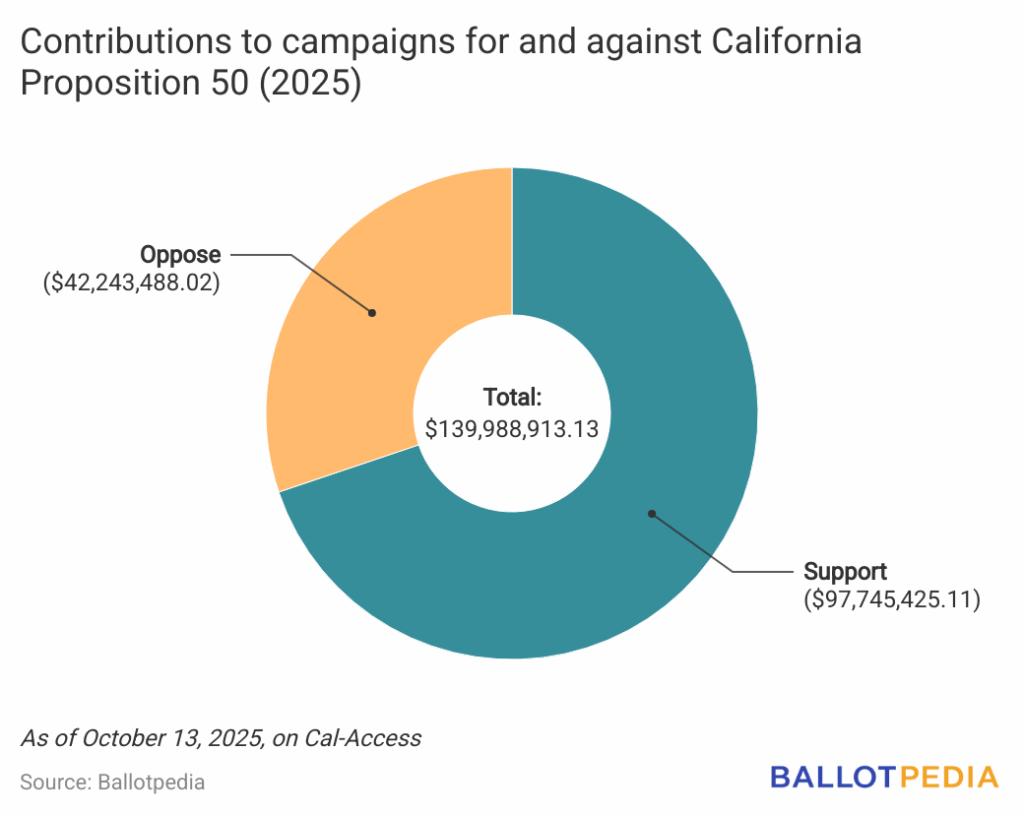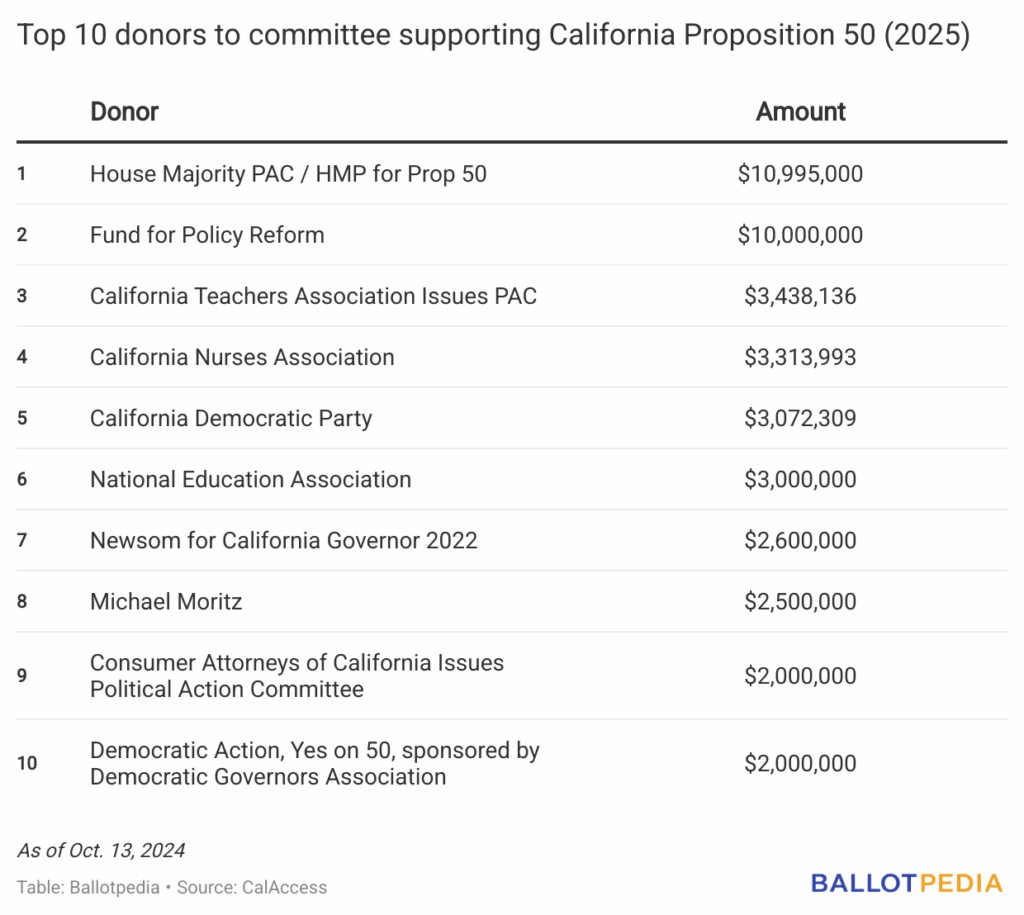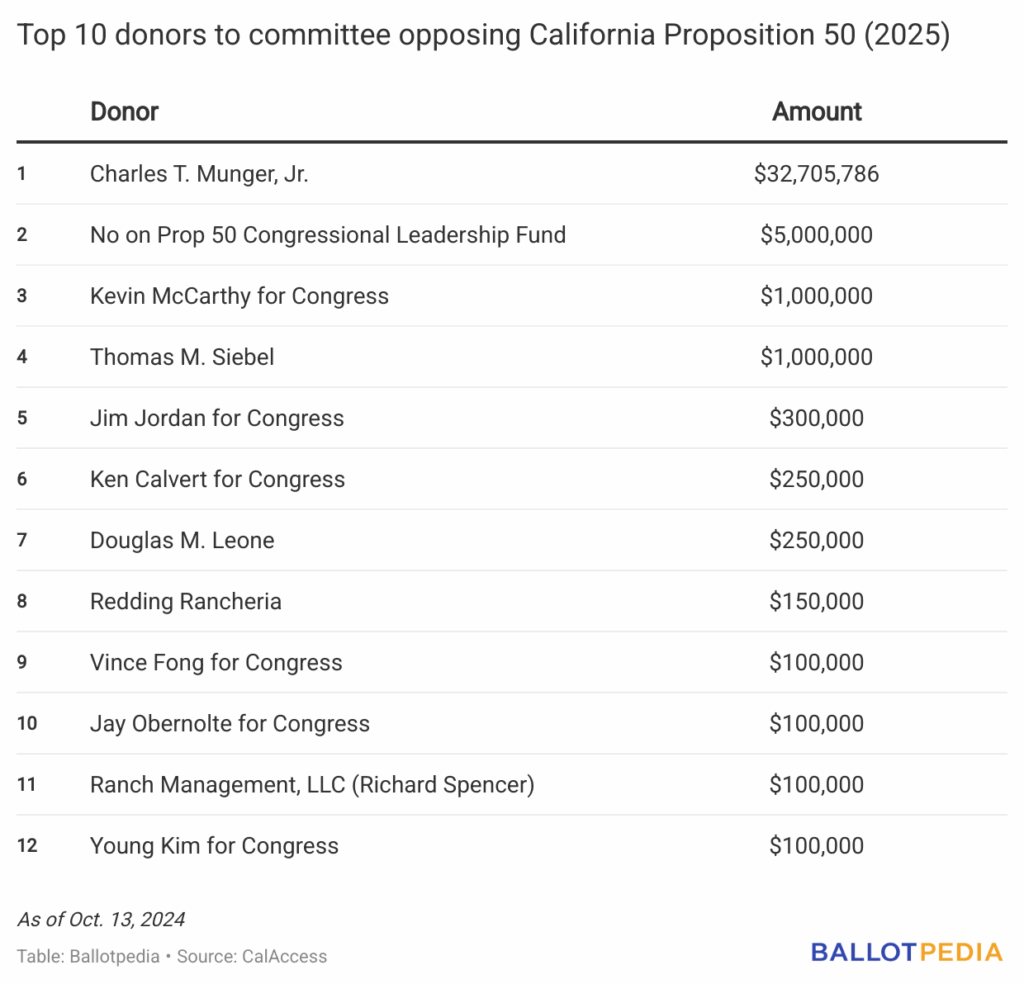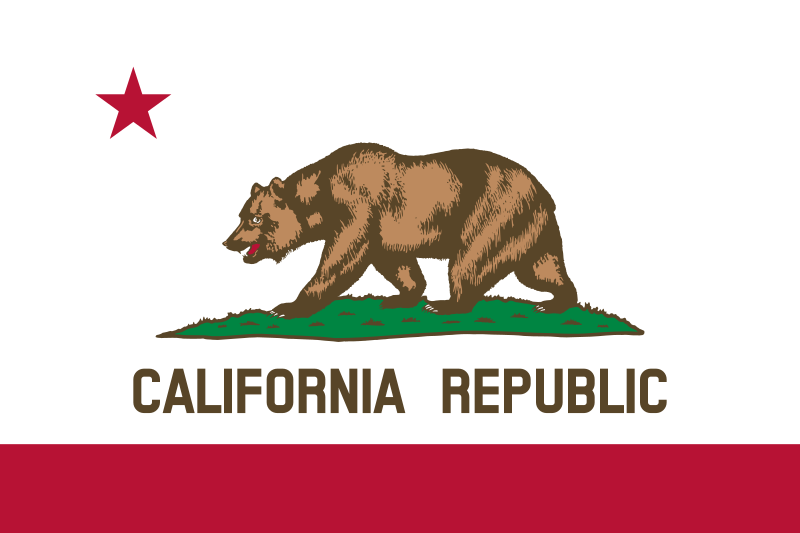California Proposition 50 ranks as the seventh most expensive ballot measure, based on total contributions to campaigns supporting and opposing the constitutional amendment. As of Oct. 13, about $139.9 million had been raised for and against Proposition 50. Supporters received $97.7 million, while opponents received $42.2 million.
To become the sixth most expensive, surpassing Proposition 25 of 2020, an additional $4.0 million is needed. To become the fifth most expensive, surpassing Proposition 87 of 2006, an additional $10.8 million is needed.
Proposition 50 would allow the state to use a new, legislature-drawn congressional district map for 2026 through 2030. The proposed map would replace the existing maps, which the 14-member Citizens Redistricting Commission (CRC) adopted in Dec. 2021. Under Proposition 50, five Republican-held districts would shift to become more Democratic, based on the 2024 presidential election results.
Gov. Gavin Newsom (D) said the ballot measure is intended to counter a mid-cycle redistricting proposal in Texas: "They’re not screwing around. We cannot afford to screw around either. We have got to fight fire with fire." The Texas State Legislature approved a new congressional redistricting plan on August 22. According to The Texas Tribune, the plan "[positioned] the GOP to net up to five additional seats in Texas." Unlike Texas, the California Constitution prescribes redistricting to the CRC, so a voter-approved constitutional amendment is required to implement a legislature-drawn map.
Voters will decide Proposition 50 at a special election on Nov. 4, 2025.

Support Campaign
Supportersreported $97.7 million in contributions, as of Oct. 13.
The largest donor to the support campaign, the House Majority PAC (HMP), along with the associated HMP for Prop 50 PAC, contributed $11.0 million. HMP is a super PAC that focuses on electing Democrats to the U.S. House of Representatives.
The second largest donor to the support campaign, the Fund for Policy Reform (FPR), contributed $10.0 million. FPR is a 501(c)(4) associated with the Open Society Foundations, founded by George Soros. According to FPR's Form 990, the organization's mission is to support legislation that "assures greater fairness in political, legal and economic systems and safeguards fundamental rights."
The third largest donor was the California Teachers Association Issues PAC, which contributed $3.4 million.
The following is a chart of the 10 largest donors to the support campaign:

Tom Steyer made an independent expenditure of $12.8 million for advertisements in support of Proposition 50. Steyer is an investor, philanthropist, and donor to progressive and Democratic causes. He founded the organization NextGen America and was a candidate for president in 2020. Steyer made the expenditure independent of the political action committees supporting Proposition 50.
Opposition Campaign
The largest donor to the opposition campaign, Charles T. Munger, Jr., contributed $32.7 million—77.6% of the opposition's total funds. Munger, a physicist and political donor, is the son of Charles Munger Sr., who was a business partner at Berkshire Hathaway. He was chairperson of the Santa Clara County Republican Party (2012-2015) and the California Republican Party's Initiatives Committee (2013-2019). He contributed to several ballot measure campaigns in the 2000s and 2010s, including campaigns to create the California Citizens Redistricting Commission.
The second largest donor was the Congressional Leadership Fund, which contributed $5.0 million. The Congressional Leadership Fund is a super PAC that focuses on electing Republicans to the U.S. House of Representatives.
The third largest donors—Kevin McCarthy for Congress and Thomas M. Siebel, Chairman of C3.ai, Inc.—each provided $1.0 million.
The following is a chart of the 10 largest donors to the opposition campaign:

Campaign Advertisements
As of Oct. 14, the Yes on 50 PAC published 18 campaign advertisements on YouTube. Eleven of these feature current or former elected officials, including Gov. Gavin Newsom, U.S. Sen. Alex Padilla, and U.S. Rep. Lateefah Simon from California; U.S. Sen. Elizabeth Warren of Massachusetts; U.S. Sen. Chris Murphy of Connecticut; U.S. Rep. Alexandria Ocasio-Cortez of New York; and U.S. Rep. Jasmine Crockett of Texas. On Oct. 14, the PAC also released an ad featuring former President Barack Obama.
As of Oct. 14, the two No on 50 PACs had published a combined total of nine campaign advertisements on YouTube. Three of the ads feature current or former elected officials: Brea Mayor Blair Stewart, Yorba Linda Mayor Janice Lim, and former Gov. Arnold Schwarzenegger.
Polling
The most recent poll on California Proposition 50, conducted from Sept. 29 to Oct. 1, 2025, surveyed 976 likely voters. It found 56% in favor, 39% opposed, and 5% undecided. The poll found that political party affiliation was one of the strongest predictors of voter opinion. Among Democrats, 89% supported Proposition 50, while 90% of Republicans opposed it. Independents were divided, with 54% in favor and 44% opposed.
The second most recent poll, conducted from Sept. 15 to Sept. 16, surveyed 1,000 registered voters. It found 51% in favor, 34% opposed, and 15% undecided.
The following chart summarizes four published polls that reported their full results, sample sizes, margins of error, and question wording.

California Proposition 50 is one of 24 statewide ballot measures across five states that voters will decide on Nov. 4, 2025.
Additional reading:


